Categories
New Blog
Tags
Capsule filling machine is an indispensable production equipment in pharmaceutical industry, you're likely familiar with the crucial role capsule filling machines play in your manufacturing process. These sophisticated devices are essential for efficiently producing high-quality capsule medications. However, like any complex machinery, capsule filling machines can encounter various issues during operation. Understanding these problems, their causes, and solutions can help you maintain optimal production efficiency and product quality.
One of the most common issues you might face is shell jamming. This occurs when empty capsule shells get stuck in the machine's components, disrupting the filling process.
Causes:
- Improper storage of capsule shells: Capsule shells are hygroscopic and sensitive to environmental conditions. When stored in areas with high humidity or fluctuating temperatures, they can absorb moisture, leading to deformation or softening. This makes them prone to sticking together or getting caught in the machine's mechanisms.
- Incorrect machine settings: Each capsule size requires specific machine adjustments. If the settings are not properly calibrated for the capsule size being used, it can cause misalignment in the feeding and separation processes, leading to jams.
- Worn-out or damaged machine parts: Over time, components like separation pins, bushings, or segments can wear down. This wear can create irregular surfaces or gaps that catch capsule shells, causing them to jam.
Solutions:
- Implement strict environmental controls for capsule storage. Maintain a temperature between 15-25°C and relative humidity between 35-65%. Use dehumidifiers or air conditioning systems if necessary.
- Develop a comprehensive checklist for machine setup that includes verifying all settings match the capsule size being used. Train operators to double-check these settings before each production run.
- Establish a regular maintenance schedule that includes detailed inspection of all capsule-handling components. Replace parts at the first sign of wear, not just when they fail completely.
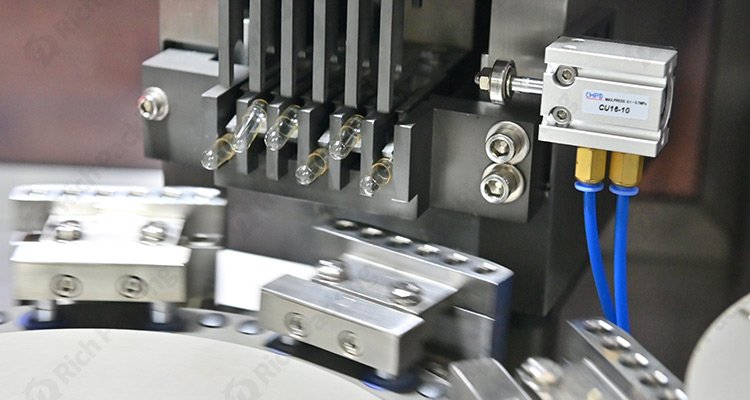
You may notice powder or liquid ingredients leaking from various parts of the machine during operation.
Causes:
- Overfilling of the powder hopper: When the hopper is filled beyond its recommended capacity, it creates excessive pressure on the feeding mechanism. This can force powder through small gaps or seals that would normally contain it.
- Worn or damaged seals: Seals deteriorate over time due to constant exposure to powder particles and mechanical stress. As they wear, tiny gaps can form, allowing powder to escape.
- Incorrect assembly after cleaning: Modern capsule filling machines have numerous components that must be reassembled precisely after cleaning. Even slight misalignments can create pathways for powder leakage.
Solutions:
- Install visual markers or automated sensors in the hopper to indicate maximum fill levels. Train operators on the importance of adhering to these limits and the consequences of overfilling.
- Implement a proactive seal replacement program. Keep detailed records of seal performance and lifespan to optimize replacement intervals. Consider using more durable seal materials if frequent replacements are necessary.
- Develop detailed, step-by-step reassembly procedures with photos or videos for reference. Implement a two-person verification system for critical assembly steps to ensure accuracy.
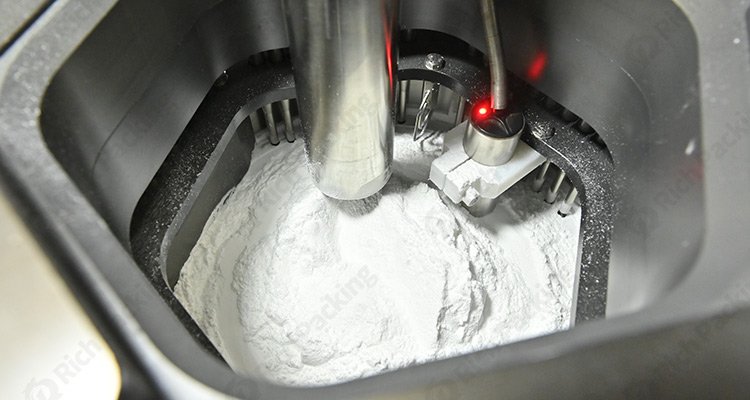
Maintaining precise dosing is crucial for product efficacy and safety. Inaccurate dosing can lead to substandard products and potential regulatory issues.
Causes:
- Inconsistent powder flow: Powder flow can be affected by particle size distribution, moisture content, and electrostatic charges. Inconsistencies in these properties can lead to irregular filling of the dosing mechanism.
- Worn dosing disc or auger: The dosing components directly control the amount of powder dispensed. Wear on these parts can change their dimensions or surface properties, affecting the volume of powder they can hold or transfer.
- Improper machine calibration: Calibration involves setting multiple parameters that work together to achieve accurate dosing. If any of these parameters are off, it can lead to systemic under or over-filling.
Solutions:
- Conduct a thorough analysis of your powder properties and how they change during production. Consider implementing in-line powder conditioning systems to maintain consistent flow properties.
- Establish a regular inspection schedule for dosing components. Use precision measurement tools to detect wear before it significantly impacts dosing accuracy. Consider using more wear-resistant materials for these components.
- Develop a comprehensive calibration protocol that addresses all relevant parameters. Invest in advanced calibration tools and training for your maintenance team. Implement a system of regular calibration checks throughout production runs.
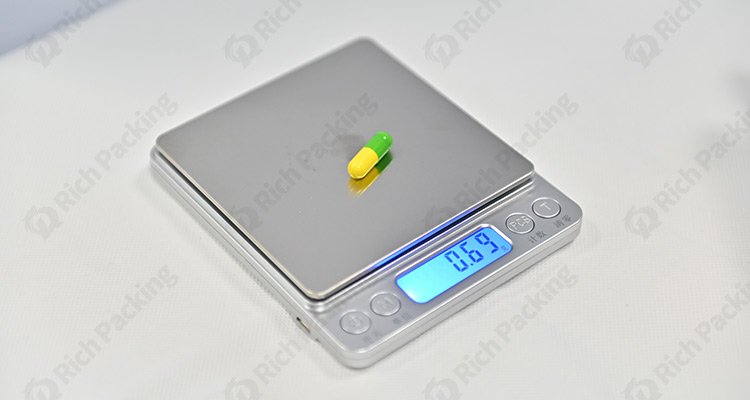
You might encounter problems with capsules not separating properly, leading to unfilled or partially filled capsules.
Causes:
- Incorrect tension in the separation pins: The separation process relies on precise mechanical forces. If the tension is too low, capsules may not separate fully. If it's too high, it can damage the capsules.
- Misalignment of machine components: Even slight misalignments in the separation mechanism can cause capsules to be improperly positioned during the separation process.
- Capsule shells with inconsistent dimensions: Variations in capsule shell thickness or size, even within acceptable manufacturing tolerances, can lead to separation issues.
Solutions:
- Invest in advanced tension measurement tools and develop a standardized procedure for setting and verifying separation pin tension. Train operators on how to recognize signs of incorrect tension.
- Implement a regular alignment check as part of your maintenance routine. Use laser alignment tools for precision. Develop a troubleshooting guide for operators to quickly identify and correct minor misalignments.
- Work closely with your capsule supplier to minimize dimensional variations. Consider implementing an incoming quality control process to verify capsule dimensions before use.
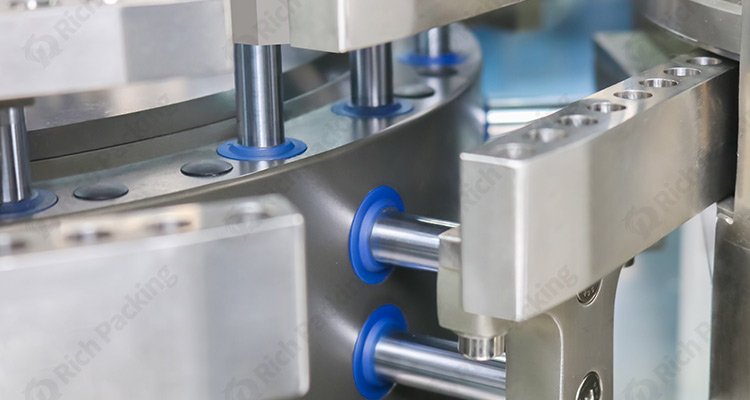
Variations in fill weight can compromise product quality and potentially lead to regulatory non-compliance.
Causes:
- Fluctuations in powder density: Powder density can change due to factors like settling during storage, variations in particle size distribution, or changes in moisture content. These fluctuations directly impact fill weight.
- Inconsistent powder flow: Poor flow can lead to incomplete filling of the dosing mechanism or inconsistent discharge into the capsules. This can be caused by powder properties, environmental conditions, or machine vibrations.
- Variations in machine speed: Changes in machine speed can affect the time available for powder to settle in the dosing mechanism or the capsule itself, leading to weight variations.
Solutions:
- Implement real-time powder density monitoring systems. Develop algorithms to automatically adjust dosing parameters based on density fluctuations.
- Optimize your formulation for consistent flow properties. Consider using flow aids or modifying your granulation process. Implement powder conditioning systems to maintain consistent moisture levels.
- Use advanced machine control systems that can maintain consistent speed throughout the production run. Implement a speed verification protocol as part of your regular quality checks.
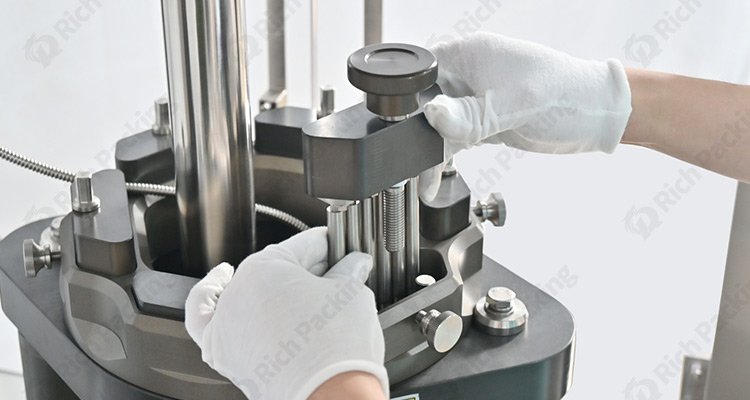
6. Cross-Contamination
Ensuring product purity is paramount in pharmaceutical manufacturing. Cross-contamination can occur if proper procedures aren't .
Causes:
- Inadequate cleaning between batches
- Airborne powder particles
- Improper handling of materials
Solutions:
- Develop and strictly adhere to thorough cleaning protocols
- Install effective dust extraction systems
- Train operators on proper material handling procedures
Overheating can lead to machine downtime and potentially affect product quality.
Causes:
- Insufficient lubrication
- Blocked air vents
- Electrical issues
Solutions:
- Follow a regular lubrication schedule
- Clean air vents and filters regularly
- Conduct routine electrical system checks
Broken capsules can lead to product waste and potential contamination of other capsules.
Causes:
- Excessive force during the filling process
- Brittle capsule shells due to low humidity
- Misaligned machine components
Solutions:
- Adjust machine settings to apply appropriate force
- Maintain proper environmental conditions for capsule storage
- Regularly check and adjust machine alignment
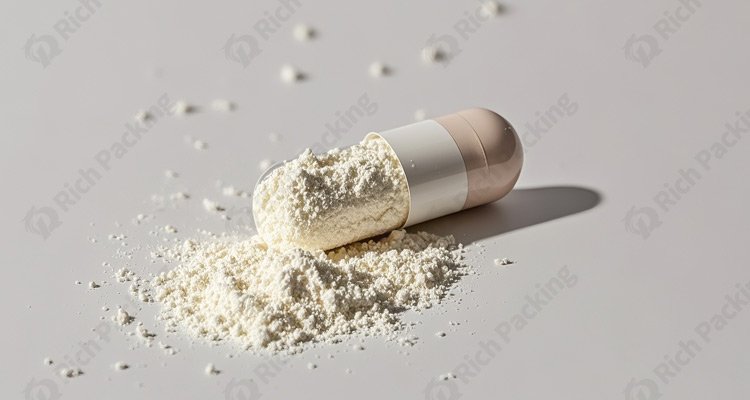
By being aware of these common issues and implementing the suggested solutions, you can significantly improve the performance of your automite capsule filling machine. Remember, preventive maintenance, operator training, and quality control measures are key to minimizing these problems and ensuring smooth, efficient production.